Going Batty For Bats
Bats are the world’s only flying mammals, being able to take to the skies for long distances to find food, mostly at night.
Bats are nocturnal and hence few of us may have noticed them as they come out mostly when night falls. They find their food and their way in the dark using either their excellent eyesight or their ability to echo-locate.
Bats are the second-most diverse group of mammals, with about 1,400 species globally. Right here in Singapore, there are some 25 native species that can be found around us. Most bats inhabit our green spaces, seeking shelter under trees, palms or even banana leaves. However, they are also common in urban areas wherever there is food and suitable roosting spots.
Important Ecological Role
The diets of bats vary across species. Insectivorous bats feed mostly on insects while fruit bats will forage for fruit like papaya, petai and chiku. As for nectar bats, they will feed on, as hinted in the name, nectar from flowers like petai and street trees such as the Golden Penda (Xanthostemon chrysanthus).
Bats perform important ecosystem functions. Nectar and fruit bats sustain and regenerate our rainforests by pollinating flowers and dispersing seeds respectively so that new plants can grow. Meanwhile, insectivorous bats feed on many kinds of insects, keeping their population under control.
Learn more about the role pollinators like bats play in Singapore, here.
Here are three common bats you can find in Singapore:
Lesser Dog-faced Fruit Bat
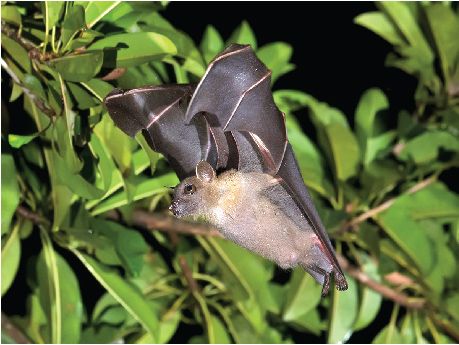
Photo credit: Nick Baker, EcologyAsia.com
The Lesser Dog-faced Fruit Bat (Cynopterus brachyotis) also known as the Common Fruit Bat, feeds on nectar and fruit. It can be found across Singapore, roosting in small groups in buildings, trees and under leaves.
Generally the male has a reddish collar while the female has a yellowish collar. Its ears and wing bones are edged in white and it has a broad snout and large eyes.
Cave Nectar Bat
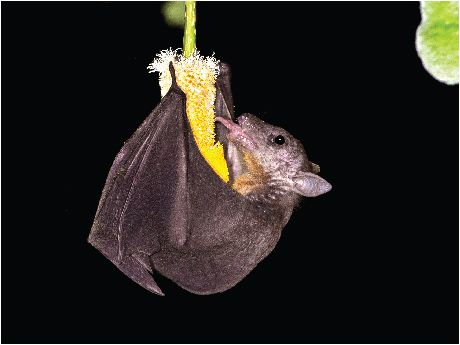
Photo credit: Nick Baker, EcologyAsia.com
The Cave Nectar Bat (Eonycteris spelaea) is a vulnerable species that roosts in large colonies in caves, old buildings and under concrete bridges. In Singapore, they are uncommon and difficult to spot.
It has dark greyish brown upperparts while its underparts are paler. It has a long and narrow muzzle and large eyes. It feeds on nectar and pollen and is considered an important pollinator of many forest trees inducing a favourite fruit of many – the durian!
Whiskered Myotis
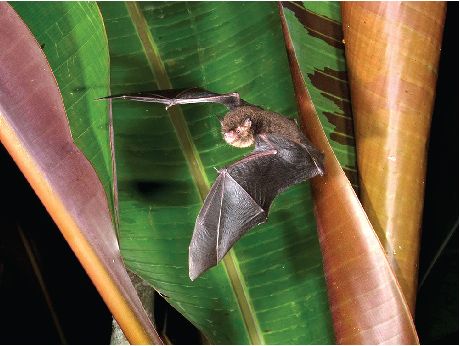
Photo credit: Nick Baker, EcologyAsia.com
The Whiskered Myotis (Myotis muricola) is a small insectivorous bat which can be found in forests and urban areas. It is most famously known for roosting in rolled-up banana leaves in the day and there can be more than one bat roosting in such a small space!
Its upper side is coloured brown or grey with dark bases and the underside has dark bases and light brown tips. The ears are moderately long, slender, bent forwards and bluntly pointed.
What to Do When Encountering Bats
1) Do not feed bats as it will change their natural foraging behaviour and make them reliant on humans for food, as well as affect the regeneration of our forests.
2) Keep calm and leave bats alone if they are seen outdoors flying or feeding, as they will come and go on their own.
3) Call NParks’ Animal Response Centre at 1800-476-1600 if you see a bat that is injured, distressed or trapped. Do not handle the bat yourself as the bat might bite in self-defence or cause further stress or injury to the animal.
Our City in Nature
Over the years, NParks has created a green network comprising roadside planting and a Park Connector Network that links up parks and other green spaces. Skyrise greenery dot developments while biophilic design has been adopted in restoring habitats.
But as Singapore continues to urbanise, the growing infrastructure will put increasing pressure on the established green cover. Coupled with climate change and more extreme weather conditions, this will result in higher urban temperatures and the increased risks of localised flooding events. Our City in Nature vision works to ensure the city develops in a way that continues to provide a high-quality living environment for residents while ensuring Singapore remains a distinctive global city.
Learn more about City in Nature here.
Learning More
Mask-wearing in outdoor settings such as parks, gardens and nature reserves is optional but continues to be required when you visit our indoor facilities, such as museums, galleries and enclosed visitor centres. In mask-off settings, please ensure a safe distance of 1 metre between individuals or groups. Social and recreational activities should be kept to a group size of up to 10 persons.
Do check out the visitorship levels of our parks using our safe distancing portal before you head down and avoid the ones with high visitorship. Learn about some simple do’s and don’ts when visiting our Nature Reserve and Nature Parks here.
Visit NParksSG, our refreshed YouTube Channel that serves as a one-stop repository for close to 300 video resources. It also provides you a platform for existing and future digital outreach including DIY gardening and related crafts, virtual tours of our green spaces, and livestream events.
For more information about the flora and fauna found in Singapore, please visit NParks Flora and Fauna Web.
If you like what you read, follow us on Facebook, Instagram and Telegram to get the latest updates.
Text compiled by Felix Siew



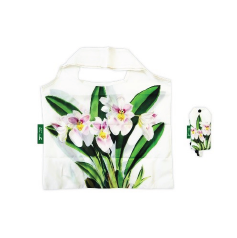
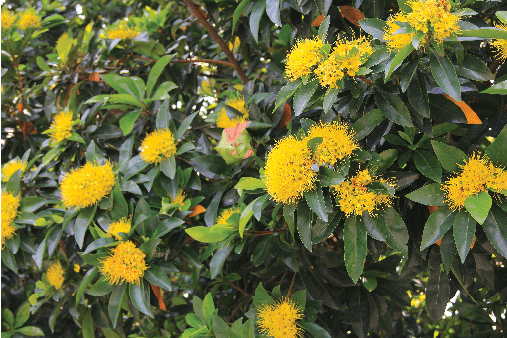
Have views or comments on this article? Let us know via this form. If you would like to give us feedback on any other areas relating to our parks and gardens, please submit via https://www.nparks.gov.sg/feedback